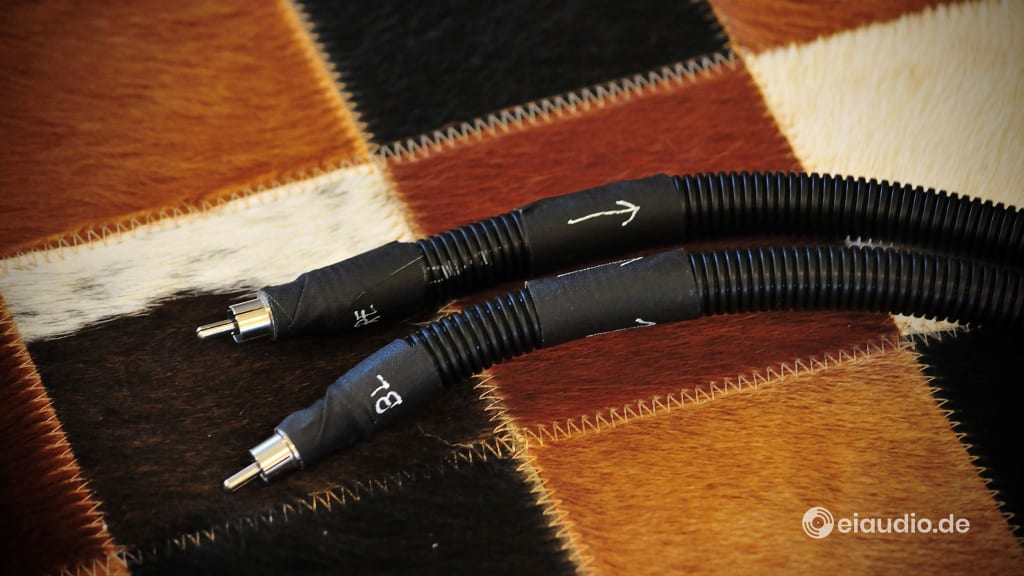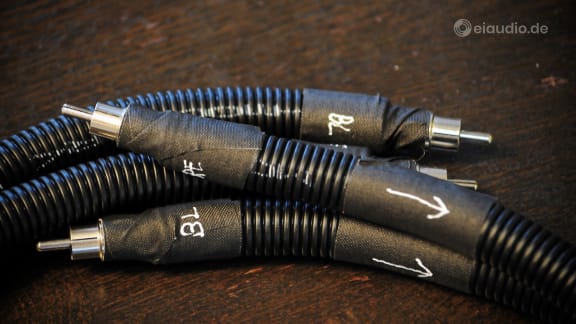The Conduit Incident
Published: 10/12/2020
Author: Karsten Hein
Category: Explorations
Tag(s): Cables
Cables on HiFi systems are known to play different roles—and therefore demand for different properties—depending on their positions in the signal chain. For instance, cables that are located near the source of the signal should ideally help to preserve both the detail and dynamics of the source material whilst maintaining a natural tonal balance, whereas cables positioned closer to the output need to uphold speed, musicality, and coherence. In order to ensure this, audiophile analog RCA/cinch interconnects positioned before the preamplifier often come without conventional shielding such as foil or mesh cover.
Manufacturers such as Kimber Kable, for instance, braid their RCA/cinch interconnects in order to minimise interference despite their lack of a conventional shield. Examples for Kimber’s braiding technique are found on their entry level ‘Tonik’, ‘PBJ’, and ‘Timbre’ cable models, all of which are great fun to play around with. The audible advantages of such concepts lie in superior transparency, speed, and dynamics. On the downside, braided cables are easily agitated by outside interference. Such interference might come in form of high or low frequency radiation or through direct induction when crossing or running parallel to other cables. Taking a peek behind most people’s HiFi racks and seeing the crossing and tangled wires, it quickly becomes clear why interference is an important factor in setting up a system. Add to this the omnipresence of WiFi & cellular communication, and it is no surprise that better wires and better positioning will often have a greater effect on sonic integrity than upgrading the units or speakers themselves. After all, most antennas are simply a short piece of wire, and even that is sufficient for airborne signals to make an impact.
Which brings me to the starting point of this exploration. One evening, after I had made some changes to the digital wiring behind our rack in order to install our second HiViLux Digital cable, sitting back in my armchair, I noticed that channel separation and imaging on our DAC had fallen to pieces. At first, I attributed this to my own tiredness, to perhaps having gotten used to the high quality of sound, but in the end the change was too abstruce to live with, and so I stuck my head behind the rack to find the culprit. From DAC to preamplifier, we are running a pair of Kimber Timbre RCA/cinch interconnects, and I saw that the two channels were touching in parallel over a distance of about 10cm. As I lifted the upper one off the one lying underneath, I noticed a change in the sound, similar to a blanket being lifted. I could already hear the difference while being bent behind the system. Hence, I fixed the new position and returned to my seat to find that what had previously been lacking had now been restored.
Following this experience, I began to wonder if it was possible to place spacers between the many cables to make sure that they neither touched nor crossed. I contacted some friends of mine who have a better understanding of electronics, but they were only familiar with the regular binders used to collect and fasten cables behind a rack. They also found it difficult to relate to my finding. One suggested it was a psycho-acoustic phenomenon, and another warned me not to believe everything I read in HiFi magazines. Unable to find professional help, I decided to explore this subject on my own. It occurred to me that the best protection for the cables would span the whole length of the wire, just like a second skin. I went online and found 2m of corrugated conduit of the variety that is used to protect cables from rodent bites in vehicles. I chose the 13mm diameter that would best fit over the cinch plugs. When it arrived in the post, I cut it into lengths of 95cm so that it was slightly shorter than the RCA/cinch interconnects. I pushed it over the whole length and secured it at both ends with black fabric tape. I then used a white marker to label the channel and the signal direction.
Before reading on, can you guess the outcome? I suspect that you cannot, simply because I had no idea myself before trying. And this is the greatest thing about exploration: our theories need to hold up in practice. Needless to say, I would have favoured a positive outcome in the lines of better imaging, greater musicality, etc., simply because I had invested money and time in this project. Unfortunately, I was not that lucky. I connected the newly constructed Kimber Timbre with conduit, and the result was a sluggish and muffled sound. Most of what makes Kimber’s braided cables special had disappeared. What had been one of my better cables had become one of my worst-sounding. After about 30min of listening, I took the conduit off and had my previous sound back.
Now, who can tell me what I did wrong? Did I somehow connect the grounds of the two RCA/cinch plugs with the corrugated plastic conduit? Did the wires running inside somehow create an electric current with the conduit? — I am leaving this exploration as a fail for now, but with my present knowledge I cannot be sure of the exact reason of failure, other than to report that it really did sound terrible.




